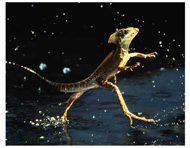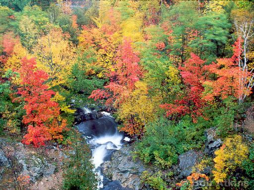Ecology Test
Chapter 1
Summary: Chapter one provides an introduction to environmental science and the menthods used withing the field. It also focuses on the impact of humans on the environment.
1. Explain in your own words the importance of sustainability. Define the concept and provide at least one example of how a society has either thrived or failed due to their use of sustainable practices or lack thereof.
2. Typically, the first step in the scientific method is ____________.
- Observations
- Predictions
- Questions
- Test
3. Environmental science is a social movement dedicated to protecting the natural world whereas environmentalism is the pursuit of knowledge about the workings of the environment and our interactions with it.
- True
- False
4. In the mid 1700s, a shift from rural life, animal-powered agriculture, and handcrafted goods to an urban society occurred. This was known as the ___________.
- Agricultural revolution
- Tragedy of the Commons
- Industrial Revolution
- Fossil Fuel Revolution
5. Those who believe that we will find ways to make Earth’s natural resources meet all of our needs indefinitely are known as ____________.
- Environmentalists
- Cornucopians
- Cassandrans
- Biocentrics
6. Which of the following is NOT a goal of the triple bottom line:
- Economic advancement
- Environmental protection
- The promotion of social equity
- Lowering earth’s natural capital
7. Which of the following are NOT declining:
- Earth’s biodiversity
- Earth’s human population
- Earth’s natural capital
- Earth’s non-renewable resources
8. A theory is a statement that attempts to explain a phenomenon or answer a scientific question
- True
- False
9. Relate your ecological footprint to the average footprint of one other country. How does it compare? Explain why it is different or similar and what the reasons for this might be.
10. Match the following:
- Peer review- a
- Manipulative experiment- b
- Natural experiment- c
- Controlled experiment- d
- Observational science- e
__ The scientist controls for the effects of all variables except the one whose effect he or she is testing
__ Type of research in which scientists gather basic information about organisms, materials, systems, and processes that are not well known
__ Compares how dependent variables are expressed in naturally different contexts
__The researcher actively chooses and alters the independent variable
__ Process by which a manuscript is examined by other specialists in the field
Chapter 2
Summary: Chapter 2 provides an introduction to the field of chemistry and its basic concepts such as molecules and energy. It focuses on the ways in which chemistry affects animals, humans, and the environment.
1. Organic compounds are ________.
- Compounds containing only carbon and hydrogen
- Carbon atoms joined by covalent bonds
- Long chains of repeated molecules
- Large-size molecules
2. Kinetic energy is changed into potential energy to produce motion, action, and heat
- True
- False
3. Match the following:
__ Proton
__ Neutron
__ Nucleus
__ Electron shell
__ Electron
4. Apply your knowledge of scientific concepts to describe how this animal is able to walk on water:
5. On the pH scale, basic solutions are greater than 7, acidic solutions are less than 7, and neutral solutions are 7.
- True
- False
6. The simplest hydrocarbon is _______:
- Methane
- Rubber
- Naphthalene
- Ethane
7. Which of the following molecules is NOT a polymer?
- Carbohydrates
- Nucleic acids
- Lipids
- Proteins
8. The first law of thermodynamics states that ______:
- Energy can change forms but cannot be created nor destroyed
- Energy can be both created and destroyed
- The nature of energy changes from a more-ordered to a less-ordered state
- The nature of energy changes from a less-ordered to a more-ordered state
9. Identify the three types of energy and describe how they differ from one another:
10. The ratio of useful energy output to the amount needing to be input is known as___.
- Photosynthesis
- Energy Conversion Efficiency
- Cellular Respiration
- pH Scale
Chapter 3
Summary: The main points in this chapter outline the process of natural selection and the characteristics of populations that calculate population growth. The five levels of the ecological organization are also summarized as well as the conservation of biodiversity.
1. According to Charles Darwin, which of the following is NOT true regarding natural selection
- Organisms face a constant struggle to survive and reproduce
- Organisms tend to produce more offspring than can survive
- Individuals of a species do not vary in their characteristics
- Some individuals are better suited to their environment and will survive and pass their genes on in their offspring
2. When a species cannot adapt quickly enough to a changing environment, this is known as _______.
- Extinction
- Sympatric speciation
- Allopatric speciation
- Disruptive selection
3. Match the following:
- Directional selection -a
- Stabilizing selection -b
- Disruptive selection -c
- Natural selection -d
- Artificial selection -e
__ the process by which traits that enhance survival and reproduction are passed on more frequently to future generations than those that do not
__ the process of selection conducted under human direction
__ produces intermediate traits, preserving the status quo
__ traits diverge in two or more directions
__ drives a feature in one direction
4. Using the image below as well as your knowledge of genetic variation, adaptation, and mutation, analyze how such a variation could affect this particular animal as well as the community as a whole.
5. After every mass extinction the biodiversity has returned to or exceeded its original state.
- True
- False
6. Describe how speciation and extinction together determines Earth’s biodiversity. Make sure to include the definition of biosphere in your description.
7. __________ attribute(s) is an example of a limiting factor that restrains population growth.
- Chemical
- Psychological
- Ecological
- Carrying capacity
8. What is the natural rate of population growth in a community that has a population of 6 million if the crude birth rate is 50,000 and the crude death rate is 26,000?
- 34,000
- 120,000
- 76,000
- 5,340,000
9. An animal species that have long gestation periods and have few offspring, are an example of r-selected species.
- True
- False
10. Which type of distribution does this image represent?
Chapter 4
Summary: The main points in this chapter were the types of species interactions that occur in an ecosystem and the discussion of the different terrestrial biomes of the world. The different trophic levels as well as the food webs were also described in great detail and the prediction of potential invasive species in communities was displayed.
1. Which of the following is NOT a characteristic of predation?
- The process by which one species hunts and consumes an individual of another species.
- Interactions among predators and prey have been ruining the organization of the food web.
- Zebra mussels are a species characterized as predators.
- Most predators are also prey for another animal species.
2. Match the following descriptions to their respective trophic level in an ecological community.
- Primary consumers -a
- Decomposers -b
- Producers -c
- Tertirary consumers -d
__ herbivores characterize this trophic level
__ organisms that characterize this level enhance top most soil layers and play essential roles as the community’s recyclers.
__ algae captures solar energy and uses photosynthesis to provide sugar
__ rodents are eaten by animals in this trophic level
3. Analyze these animals in the picture and classify which animal is the beginning of the food chain and work your way up to the top of the food chain. In your analysis discuss the trophic level that each animal falls into as well.
4. Primary succession follows a disaster that wipes out all vegetation and soil life.
- True
- False
5. Illustrate how zebra mussels and quagga mussels affect a community on the Great Lakes? Please give at least three examples.
6. Which biome(s) does the state of California fall into?
- Chaparral
- Desert, Temperate Grassland
- Chaparral, Savanna, Mountainous regions
- Chaparral, Desert, Temperate Rainforest
7. Products such as lumber and paper are produced in the temperate decidous forest.
- True
- False
8. A climatograph that experiences significance season variation in rainfall from about October to April is an example of which biome?
- Tundra
- Tropical rainforest
- Temperate rainforest
- Savanna
9. Which of the following ecologists promoted the idea that communities are cohesive entities whose members remain associated over time and space?
- Darwin
- Clements
- Gleason
- Strayer
10. Individuals minimizing competition by changing their behvavior to only using a portion of the total number of resources characterize which form of species interaction?
- Intraspecific competiton
- Competitive exclusion
- Species coexistence
- Inerspecific competition
Chapter 6
Summary: This chapter focused ethical standards mostly involving the environment and the expansion of ethics through the western world. The different types of economies were also introduced and the implication of each on the environment. Sustainablity with respect to ethics, economics, and businesses was also described thoroughly.
1. One type of an economy is the subsistence economy. Explain how people in this type of economy go aobut daily activities and compare that to other economies discussed in class.
2. Which of the following can NOT be contributed to a steady state economy.
- A British economist John Stuart Mill hypothesized that as resources become harder to find and extract economic growth would slow.
- Wealth and happiness will not continue to rise when economic growth is leveled.
- The story of the Aboriginal Australians demonstrate what happens when society subsists sustainability.
- Critics of this type of economy assume that an end to growth will bring an end to the rising quality of life.
3. Ecolabeling, a method that informs consumers whcih brands use environmentally benign processes does t not help market failure.
- True
- False
4. The bottled water industry is an example of:
- Greenwashing
- Socially responsible investing
- Contingent valuation
- Energy efficiency
5. The Exxon Valdez Oil spill did what for the US economy?
- Had no effect
- Decreased US GDP
- Increased US GDP
- Solely devestated Alaskan beaches
6. More resource extraction is both a cause and consequence to rising per capita consumption.
- True
- False
7. Apply the knowledge you have learned about ethics, economics, and the environments on the Kakadu Region in Australia and the current problem there.
8. Match the definitions of nonmarket values to their term.
- Existence Value -a
- Cultural Value -b
- Option Value -c
- Educational Value -d
__ Just because they exist even though they may never be experienced directly.
__ Things that sustain or help define our culture.
__ May use now or later.
__ Teach us about ourselves and the world.
9. Which of the following is not an example of classical economics?
- Nicknames ‘’the invisible hand’’ by Adam Smith
- Examines the psychological factors underlying consumer choices
- People are free to pursue their own economic self-interest in a competitive marketplace.
- This philosophy remains a pillar of free-market thought today.
10. _______ ethic holds that we should protect the natural environment in a pristine, unaltered state
- conservation
- preservation
- environment
- ecological




